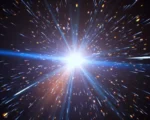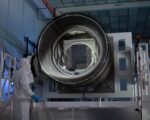A massive interstellar object, possibly eight times the mass of Jupiter, may have drastically reshaped the orbits of the outer planets in our solar system. According to a new study, this mysterious planetary-mass body could have passed through our solar neighborhood billions of years ago, coming dangerously close to the Sun—near the present orbit of Mars. Such an event could have altered the paths of Jupiter, Saturn, Uranus, and Neptune, potentially explaining long-debated irregularities in their current trajectories. If confirmed, this theory would provide a compelling new perspective on the early history of our solar system.
To investigate this possibility, a research team led by planetary scientist Renu Malhotra from the University of Arizona conducted an extensive set of computer simulations. The study, published in the arXiv preprint database, tested 50,000 different scenarios to determine whether a passing interstellar object could have significantly influenced planetary orbits. The team focused on celestial bodies larger than Jupiter but smaller than stars, including brown dwarfs and rogue planets. Remarkably, in about 1% of the simulations, the flyby event caused shifts in planetary orbits that closely align with what astronomers observe today.
The research suggests that the object may have approached as close as 1.69 astronomical units (AU) from the Sun—just beyond Mars’ current orbit at 1.5 AU. This proximity would have created a strong gravitational interaction, disturbing the orbits of the outer planets and leaving lasting imprints on their motion. Previous models have struggled to fully explain subtle orbital variations, but this new hypothesis could fill in the missing gaps. As Malhotra noted in an interview with Live Science, the findings suggest that the solar system’s past may have been more chaotic than previously thought.
If further research supports this theory, it could reshape our understanding of planetary formation and evolution. The idea that an interstellar wanderer influenced the architecture of our solar system raises intriguing questions about how often such encounters occur in the cosmos. Future studies, potentially aided by upcoming space telescopes and improved astronomical surveys, may reveal whether similar events have shaped other planetary systems—and whether they continue to happen today.


















